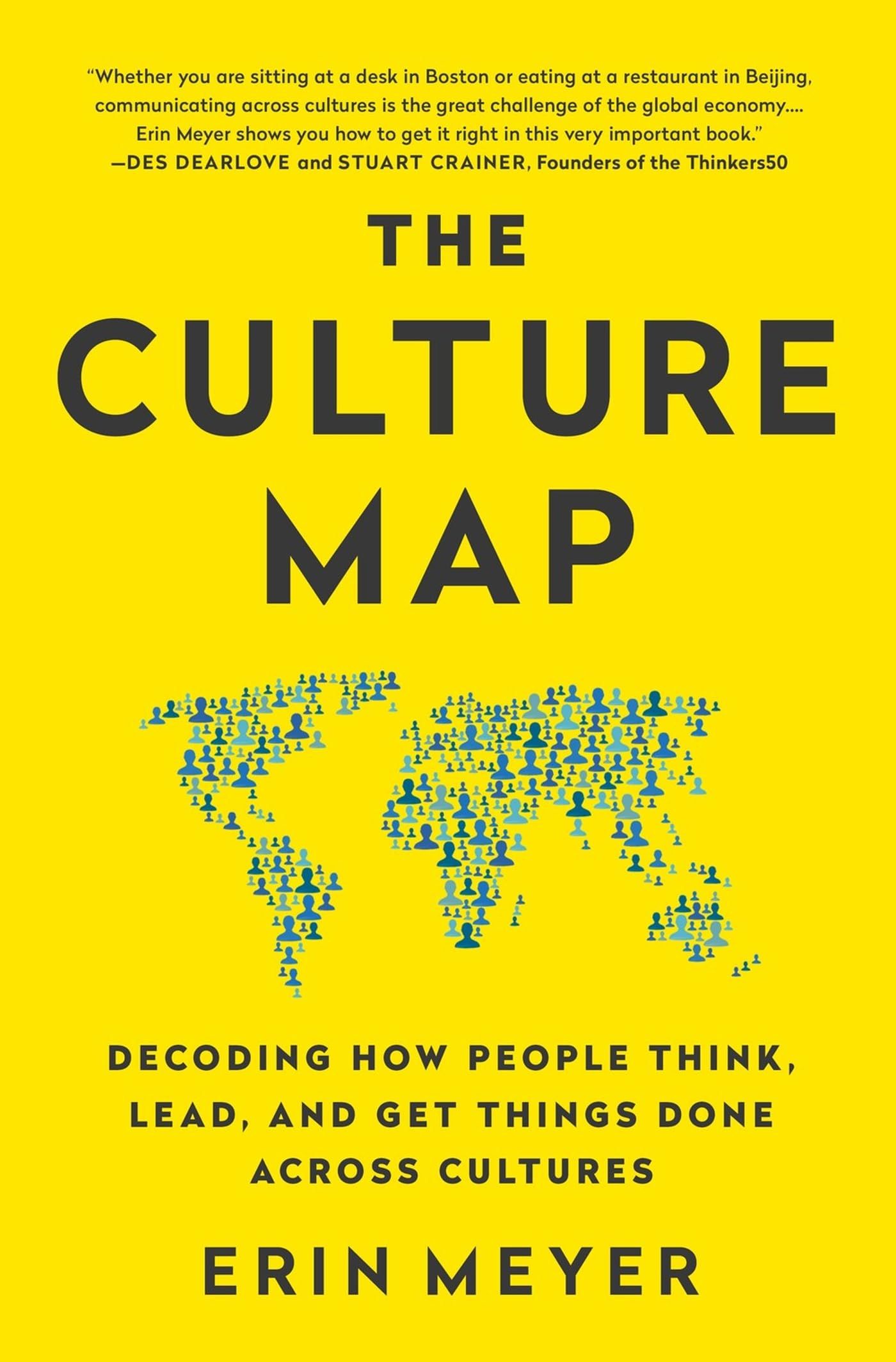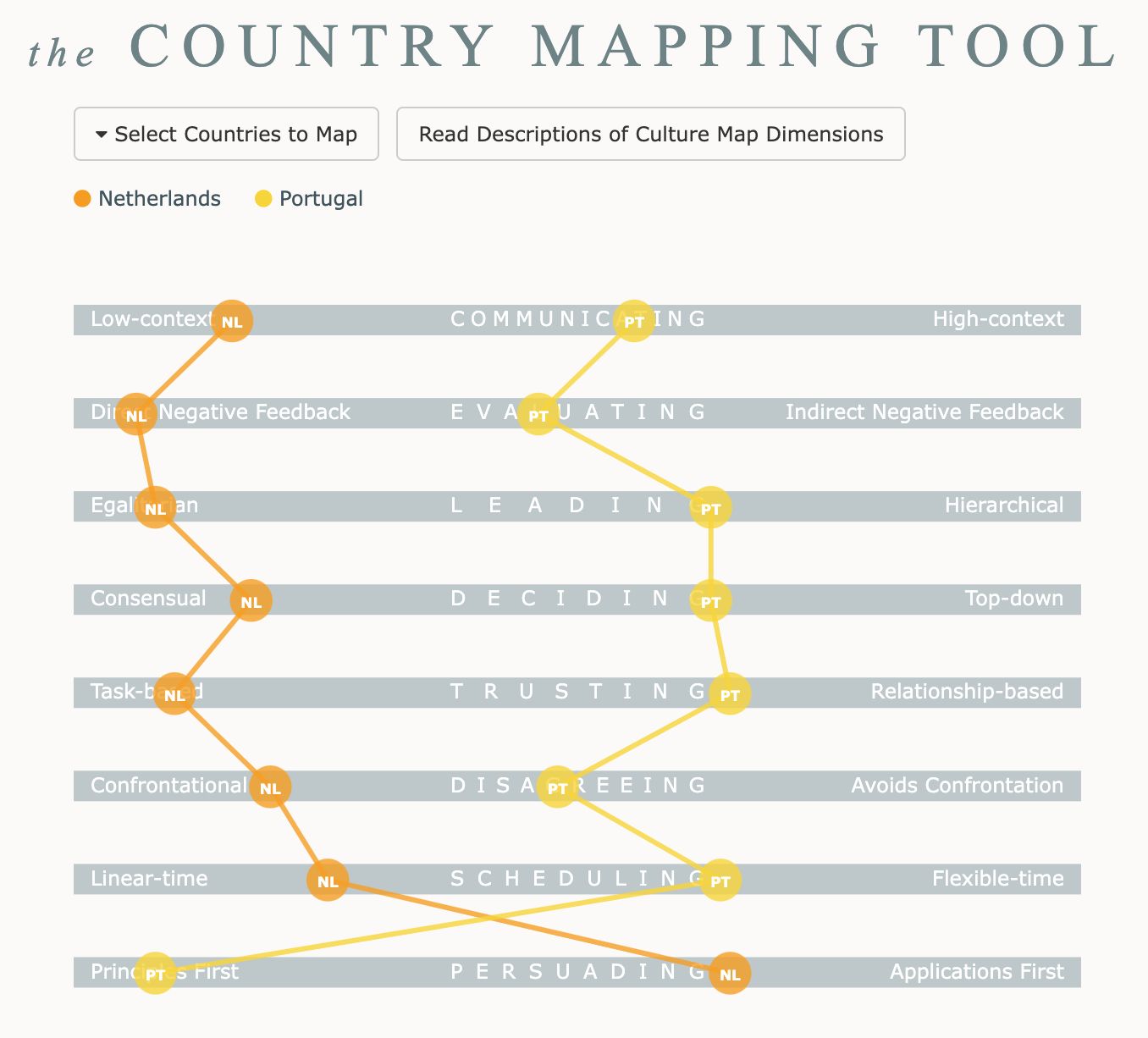The Culture Map by Erin Meyer
Permalink
Rating: ★★★★★
A few days ago I started reading this book by Erin Meyer, The Culture Map. And, today, I finished it. Considering I don’t read many non-fiction books, I was quite surprised to see how much this book captivated my attention.
The Culture Map is a book about how different cultures behave in 8 aspects: communicating, evaluating, leading, deciding, trusting, disagreeing, scheduling, and, finally, persuading. For each one of these aspects, there is a spectrum, starting and terminating at polar opposites. For example, the communication spectrum goes between low-context and high-context, and the persuading one goes between principles-first and applications-first.
Depending on where you sit on the scale, you may perceive other people from certain cultures differently. And that can lead to miscommunication and misunderstandings. The book is quite detailed and gives many examples of situations that happened to the author, or clients, or friends. For all of the 8 aspects, the author also explains how someone can try to deal with a situation. For example, how can someone from a high-context culture work with someone from a lower-context culture and avoid miscommunication.
Around two years ago, I had a multicultural workshop since I was going to be a mentor of students from all over the world. In that workshop, this book was heavily mentioned. I’m happy I read it. Considering I work in a completely remote company from people from all over the world, and having realized some of the points made in the book myself, I still consider it a must-read.
The author also provides a (of course paid) country mapping tool where you can see where your country’s culture is generally in the scale. Since I live in a country that is foreign to me, have international friends, and work with people from all over the world, I decided to pay some 4 USD for 24 hours access to the tool.
On it, I plotted some things, but I started by checking how Portugal sat on the scales, and then comparing it to the Netherlands. Unsurprisingly, they’re not polar opposites, but they’re still very far apart. Considering each culture, they could be considered opposites to each other.

I also plotted some other things: my closer team at work, a group of friends, and also all the Romance European Countries (Portugal, Spain, France, Italy, and Romania). To no surprise, they are very similar. They mostly conflict in confrontation and negative feedback. Unsurprisingly, those are related to each other.
It is important to remind that this is a generalization of one’s culture, and every individual might sit slightly off the scale. In addition, it is all relative. I (apparently) sit somewhere in the middle of most scales. While I would see Dutch people as low-context people, someone else further on the left will see them as higher-context.
All in all to say: I highly recommend the book. Some of the examples might even remind you of situations that have happened to you, and you’ll see resemblance.
- 📕 Title The Culture Map
- ✍️ Author
- 📄 Pages 288
- 📚 Publisher Public Affairs Books
- 🪪 ISBN 9781610392501
